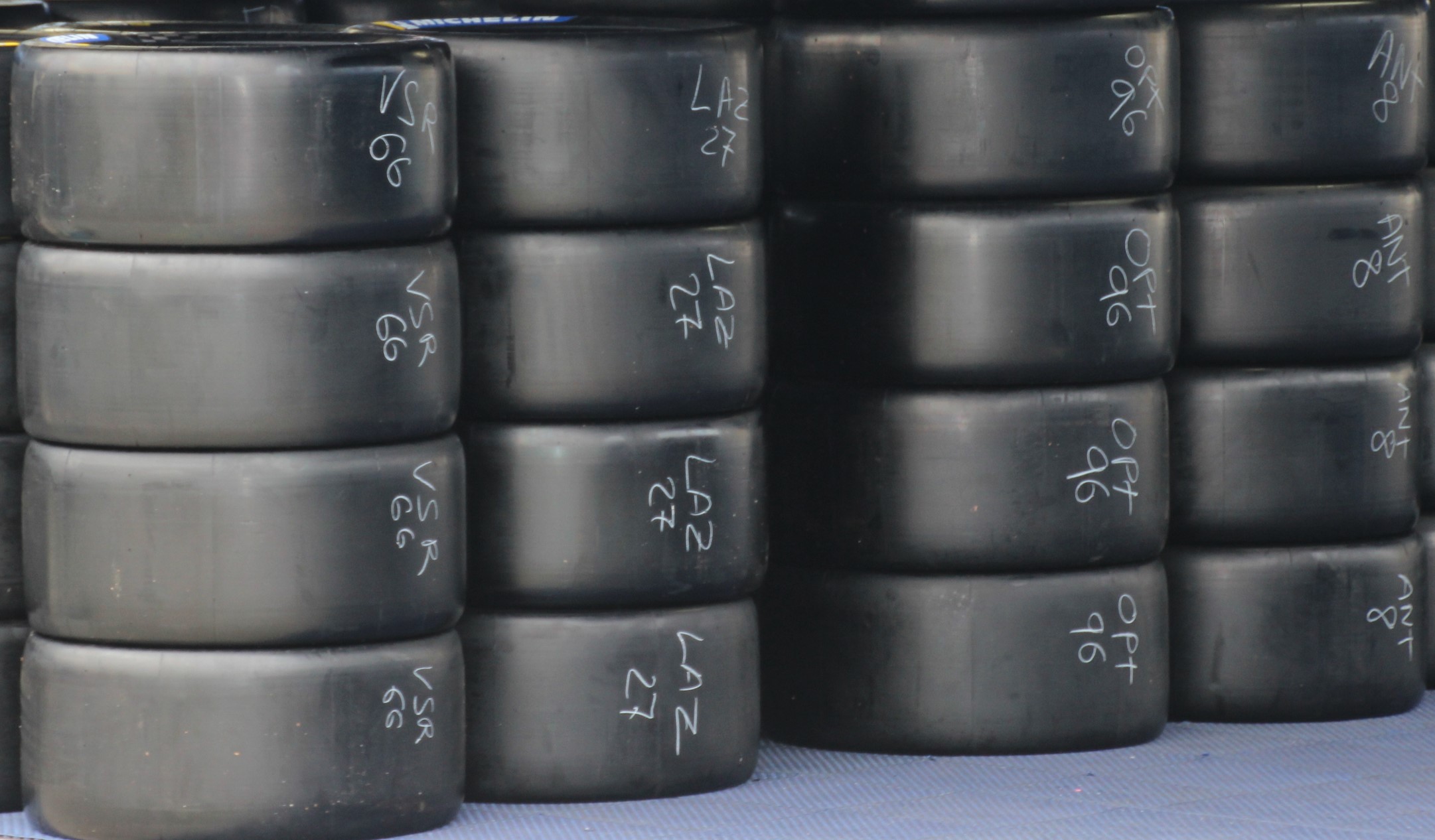The highly anticipated tire models for the TCR Kumho tire have arrived to Pertechs. So, now it’s the time to fully benefit from all the information that those tire models consist of. But first, a brief explanation what those tire models are, how they are created and what the purpose and usage of them are.
The tire models that we speak about here has nothing to do with 3D CAD models that describe the geometry properties of a tire. The tire models referred to here are mathematical descriptions of the tire to define the relationships between the input states and the outputs for a tire. Input states are normally vertical load, inclination angle and slip angle or ratio but can also be tire pressure, tire temperature, wear, velocity etc. Outputs from the tire model are normally the longitudinal and lateral force, but can also be for example heat flow, wear rate, degradation etc.
A tire model that has been very widely used throughout the automotive and motorsport industries for decades is the Pacejka Magic Formula, or simply MF. This tire model has come in a number of versions over the years with more and more features built into it. At the time of writing the most commonly used is MF5.2. MF is built up by a set of fixed equations. Those equations defines the relationships between the inputs (vertical load, inclination angle and slip angle) and the outputs (longitudinal and lateral force). Those equations each has one or several coefficients. So, to build, for example a MF 5.2 tire model, a tire property file with all those coefficients needs to be generated.
Generation of the MF tire property file can be done in several ways, either theoretically be FEA tools or by physically measure the tire. When measuring real tires, this can be done in many ways, both in lab environment or outside on real road with specific measurement equipment.
In this specific project MF5.2 tire property files were targeted for a set of different tire pressures and the measurements of the Kumho TCR tires were conducted on an airfield using a special measurement trailer.
The usage of the tire models is primarily as input files to vehicle dynamics simulation software’s, but you don’t have to go that far to begin with. A number of learnings can be done by just examining the tire models with any kind of plotting tool, to investigate things like e.g. cornering stiffness, max capacity, load sensitivity, rolling resistance, optimal inclination angle etc.
Then, when it comes to simulations, having an accurate tire model that represents the actual tire that you are using on your car, opens up a whole world of freedoms of what you can investigate. Or vice versa, without a true tire model, benefits of simulations becomes much more limited.
So what are the learnings from the tire models for the Kumho TCR tires?
To begin with, by just examining the tire models themselves it became very clear that depending on what tire pressure you would go for, a significantly different camber angle would be the optimal for extracting maximum lateral performance out of the tire. Also, the load sensitivity varies substantially which will in turn have a different impact on how chassi adjustments will effect the car behavior depending on tire pressure. No surprises really, but of course very valuable information to get actual data to rely on instead of having to guess.
Another really nice info that can be extracted from the tire data when plotting the combined longitudinal and lateral forces is the tire construction works related to other tires in terms of how much force it is able to generate under braking, cornering and accelerating and in the transition between those. Just by looking at this shape one can determine strategies not only for car setup but also for having the driver to understand how he should adapt the driving style to utilize the tire capability in an optimal way.
Once all basic learnings have been extracted from the tire models it is time to start using simulations. In this particular case, Pertechs own developed lap time simulation software was used to look at optimal chassi settings for all the circuits in the 2022 TCR Denmark championship. This has resulted in track specific settings for most of the usual variables like camber, toe, ride heights, brake distribution, weight distribution etc.
Now it will be very interesting to take all those learnings and validate them on track!

